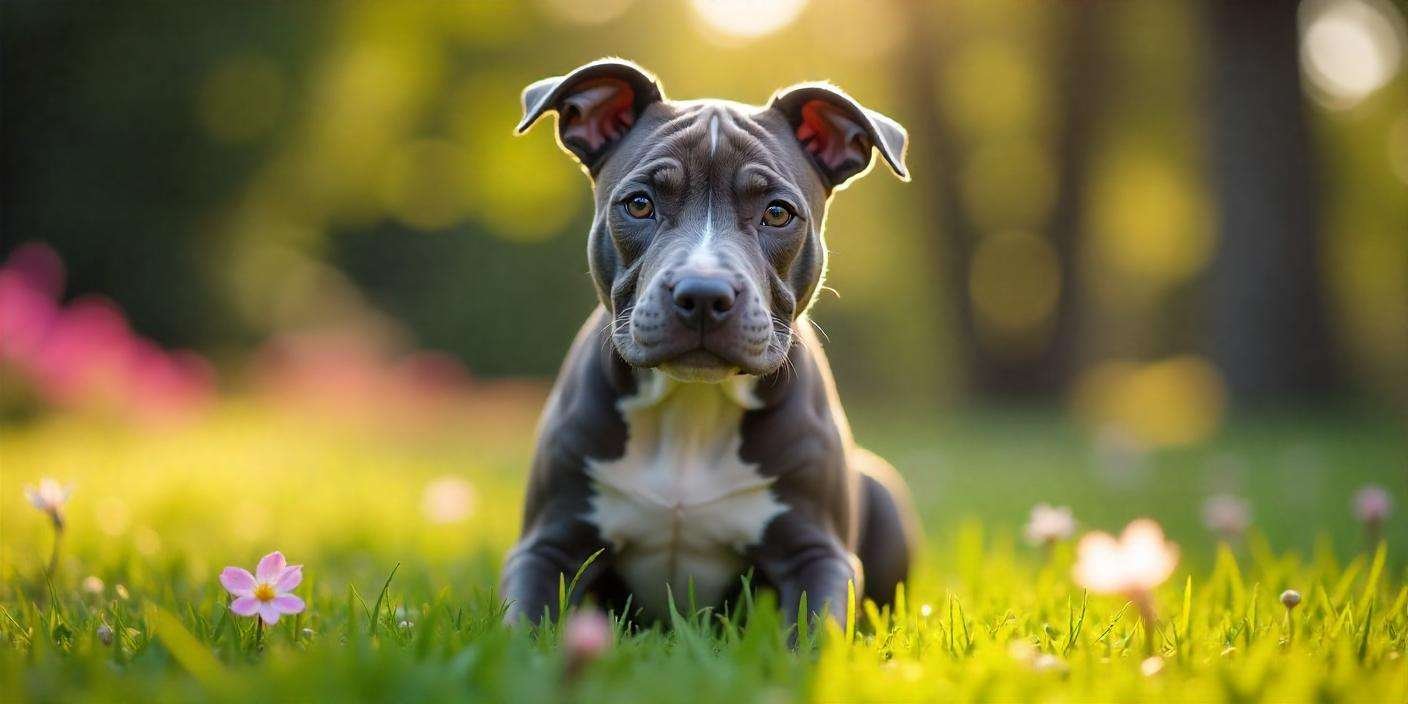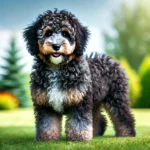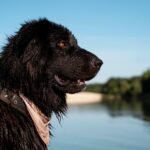The blue nose pitbull is a unique and often misunderstood breed. Known for its striking appearance and powerful build, this dog is much more than meets the eye.
What Is a Blue Nose Pitbull?
blue nose Pitbull is often mistaken for a distinct breed. It is, in fact, a variation of the American Pit Bull Terrier. The term “blue nose” refers to the unique color of the dog’s nose and coat, which comes from a recessive gene. This trait gives them a bluish-gray hue, which is distinct from other pitbulls. The blue nose pitbull shares the same physical and behavioral traits as other pitbulls but stands out due to its unusual appearance.
Why Are They Called Blue Nose Pitbulls?
The blue nose pitbull gets its name from its distinct bluish-gray nose and coat. This coloring is the result of a recessive gene that both parents must carry. While the blue color is what sets these pitbulls apart, it does not affect their behavior or temperament. It’s purely a physical trait that has made the blue nose pitbull highly sought after by dog enthusiasts.
- Unique trait: The blue nose color is due to a recessive gene.
- Not a separate breed: They are still American Pit Bull Terriers.
- Sought after: Their distinct look makes them popular among dog lovers.
Physical Characteristics of the Blue Nose Pitbull

Blue nose pitbulls are medium-sized dogs with a muscular build. They typically weigh between 30 and 60 pounds and stand about 18 to 21 inches tall. Their blue-gray coat is often short and sleek, making them easy to groom. Despite their strong, athletic appearance, blue nose pitbulls are known for their gentle and affectionate nature, especially with their families. Their expressive eyes, which can range from light blue to brown, add to their distinctive look.
Common Physical Traits
Here are some key physical characteristics of the blue nose pitbull:
- Muscular build: Strong and athletic, they have a solid, powerful body.
- Short coat: Their coat is sleek and easy to maintain.
- Distinct coloring: The blue-gray hue is their signature feature.
- Expressive eyes: Their eyes can be light blue, hazel, or brown.
This combination of strength and beauty is what draws many people to the blue nose pitbull.
Temperament: The Loyal and Loving Blue Nose Pitbull
Despite common misconceptions, blue nose pitbulls are known for their loyalty and affectionate nature. They form strong bonds with their families and are often referred to as “nanny dogs” because of their protective instincts toward children. However, due to their muscular build and energetic personality, they require consistent training and socialization to ensure they behave appropriately in all situations.
Personality Traits of a Blue Nose Pitbull
Here are some typical temperament traits you’ll find in blue nose pitbulls:
- Loyal: They are deeply attached to their families and thrive on companionship.
- Affectionate: Despite their tough exterior, they are loving and enjoy cuddling.
- Protective: They have strong protective instincts, especially toward children.
- Energetic: They need regular exercise to burn off their high energy levels.
With proper training and attention, a blue nose pitbull can be a perfect family dog, but without it, their energy may lead to behavioral issues.
Common Misconceptions About Blue Nose Pitbulls
One of the biggest challenges for blue nose pitbull owners is dealing with the stereotypes surrounding the breed. Pitbulls, in general, have gained a negative reputation due to a few high-profile cases of aggression. However, this reputation is largely undeserved. Studies show that with proper care, training, and socialization, blue nose pitbulls are no more aggressive than any other dog breed. In fact, they are often more affectionate and people-oriented than many other breeds.
Debunking the Myths
Let’s clear up some of the misconceptions about blue nose pitbulls:
- Myth 1: They are naturally aggressive.
Truth: Like any dog, their behavior depends on training and socialization. - Myth 2: They are not good with children.
Truth: Blue nose pitbulls are often protective and gentle with kids. - Myth 3: They can’t be trained.
Truth: With consistent training, they can be well-mannered and obedient.
These myths contribute to the breed’s negative image, but with proper understanding, blue nose pitbulls can be loving and loyal pets.
Health Issues Common in Blue Nose Pitbulls

Like all dogs, blue nose pitbulls are prone to certain health issues. Due to their genetic makeup, the recessive gene responsible for their blue coloring can also lead to health complications. Skin conditions, allergies, and a predisposition to hip dysplasia are some common problems seen in this breed. Regular vet checkups and a healthy lifestyle can help manage these issues and ensure your dog lives a long, happy life.
Health Concerns to Watch For
Here are some health issues commonly seen in blue nose pitbulls:
- Skin allergies: Their sensitive skin can be prone to irritation and rashes.
- Hip dysplasia: A common issue in larger dogs, leading to discomfort and mobility issues.
- Heart disease: Some pitbulls may develop heart conditions, so regular vet visits are important.
- Obesity: Due to their muscular build, they need regular exercise to avoid weight gain.
By being proactive about their health, you can help your blue nose pitbull live a full, active life.
How to Care for a Blue Nose Pitbull
Caring for a blue nose pitbull requires attention to their exercise needs, grooming, diet, and mental stimulation. These dogs are high-energy, so regular physical activity is essential to keep them healthy and prevent boredom. Mental stimulation, through interactive toys or training exercises, is equally important to engage their intelligent minds. Their short coat requires minimal grooming, but you should still regularly check their skin for any signs of irritation.
Daily Care Tips
Here are some tips for taking care of your blue nose pitbull:
- Exercise: At least 30 to 60 minutes of daily exercise is crucial.
- Mental stimulation: Puzzle toys and training exercises can help keep them mentally engaged.
- Grooming: Brush their coat weekly and check their skin for any signs of allergies.
- Balanced diet: Provide a diet that meets their energy needs, but avoid overfeeding to prevent obesity.
With the right care, your blue nose pitbull can thrive in a loving home.
Training Your Blue Nose Pitbull
Training is essential for all dogs, but it is especially important for a strong, energetic breed like the blue nose pitbull. Early socialization and obedience training will help your dog develop into a well-behaved and confident adult. Positive reinforcement methods work best with this breed, as they respond well to praise and treats. Consistency is key, so ensure that all family members follow the same rules and training techniques to avoid confusion.
Key Training Tips
Here are some training tips for blue nose pitbull owners:
- Start early: Begin socialization and training as soon as possible.
- Be consistent: Ensure everyone in the household follows the same rules.
- Use positive reinforcement: Reward good behavior with treats, praise, or play.
- Set boundaries: Teach your dog boundaries early to prevent behavioral issues later.
Training your blue nose pitbulls can be a rewarding experience, and it will help them grow into a well-adjusted adult dog.
Blue Nose Pitbulls and Children
Blue nose pitbulls are often misunderstood when it comes to their relationship with children. With proper training and socialization, these dogs can be excellent companions for families. Their protective instincts make them particularly good with kids, and they are known for being patient and tolerant. However, like with any dog breed, it’s essential to teach both the dog and the child how to interact respectfully to avoid any accidents.
How to Introduce a Blue Nose Pitbull to Children
Here are some tips for ensuring a positive relationship between your dog and your children:
- Supervise interactions: Always supervise playtime between your dog and young children.
- Teach respect: Teach children how to approach and handle the dog gently.
- Socialize early: The earlier your blue nose pitbulls are introduced to kids, the better.
- Set boundaries: Teach your dog how to behave around children, such as not jumping or being too rough.
With these tips, your blue nose pitbulls can become a loving and protective companion for your family.
FAQs
- What is a Blue Nose Pitbull?
- A Blue Nose Pitbulls are a color variation of the American Pit Bull Terrier, characterized by its blue-gray nose and coat.
- Are Blue Nose Pitbulls a separate breed?
- No, they are not a separate breed; they are simply a variation within the American Pit Bull Terrier breed.
- What is the temperament of Blue Nose Pitbulls?
- They are known for being loyal, affectionate, and intelligent, often forming strong bonds with their families.
- How do I care for a Blue Nose Pitbull?
- Regular exercise, proper training, a balanced diet, and socialization are essential for their well-being.
- Are Blue Nose Pitbulls good with children?
- Yes, with proper training and socialization, they can be great companions for children and families.












